NUR 372Med-Surg-Nclex questions
Document Content and Description Below
A 25-year-old client was admitted yesterday after a motor vehicle collision. Neurodiagnostic studies showed a basal skull fracture in the middle fossa. Assessment on admission revealed both halo and... Battle signs. Which new symptom indicates that the client is likely to be experiencing a common life-threatening complication associated with a basal skull fracture? Rationale: Clients with basilar skull fractures are at high risk for infection of the brain, as indicated by an increased oral temperature (B), because the fracture leaves the meninges open to bacterial invasion. Clients may experience (C and D), but these findings do not pose as great a life-threatening risk as infection. Jugular distention (A) is not a typical complication of basal skull fractures. A. Bilateral jugular venous distention B. Oral temperature 102° F C. Intermittent focal motor seizures D. Intractable pain in the cervical region Submit Incorrect | Correct Answer: B A home health nurse knows that a 70-year-old male client who is convalescing at home following a hip replacement is at risk for developing decubitus ulcers. Which physical characteristic of aging contributes to such a risk? Rationale: Thin, nonelastic skin (C), is an important factor in decubitus formation. Proportion of body fat to lean mass increases with age (A), and might help decrease ulcer tendency. (B) results in gray hair. (D) can contribute to broken bones, but it is probably not a factor in decubitus formation. A. 16% increase in overall body fat B. Reduced melanin production C. Thinning of the skin with loss of elasticity D. Calcium loss in the bones Submit Incorrect | Correct Answer: C A home health nurse knows that a 70-year-old male client who is convalescing at home following a hip replacement is at risk for developing decubitus ulcers. Which physical characteristic of aging contributes to such a risk? Rationale: Thin, nonelastic skin (C), is an important factor in decubitus formation. Proportion of body fat to lean mass increases with age (A), and might help decrease ulcer tendency. (B) results in gray hair. (D) can contribute to broken bones, but it is probably not a factor in decubitus formation. A. 16% increase in overall body fat B. Reduced melanin production C. Thinning of the skin with loss of elasticity D. Calcium loss in the bones Submit Incorrect | Correct Answer: C Which abnormal lab finding indicates that a client with diabetes needs further evaluation for diabetic nephropathy? [Show More]
Last updated: 2 years ago
Preview 1 out of 41 pages
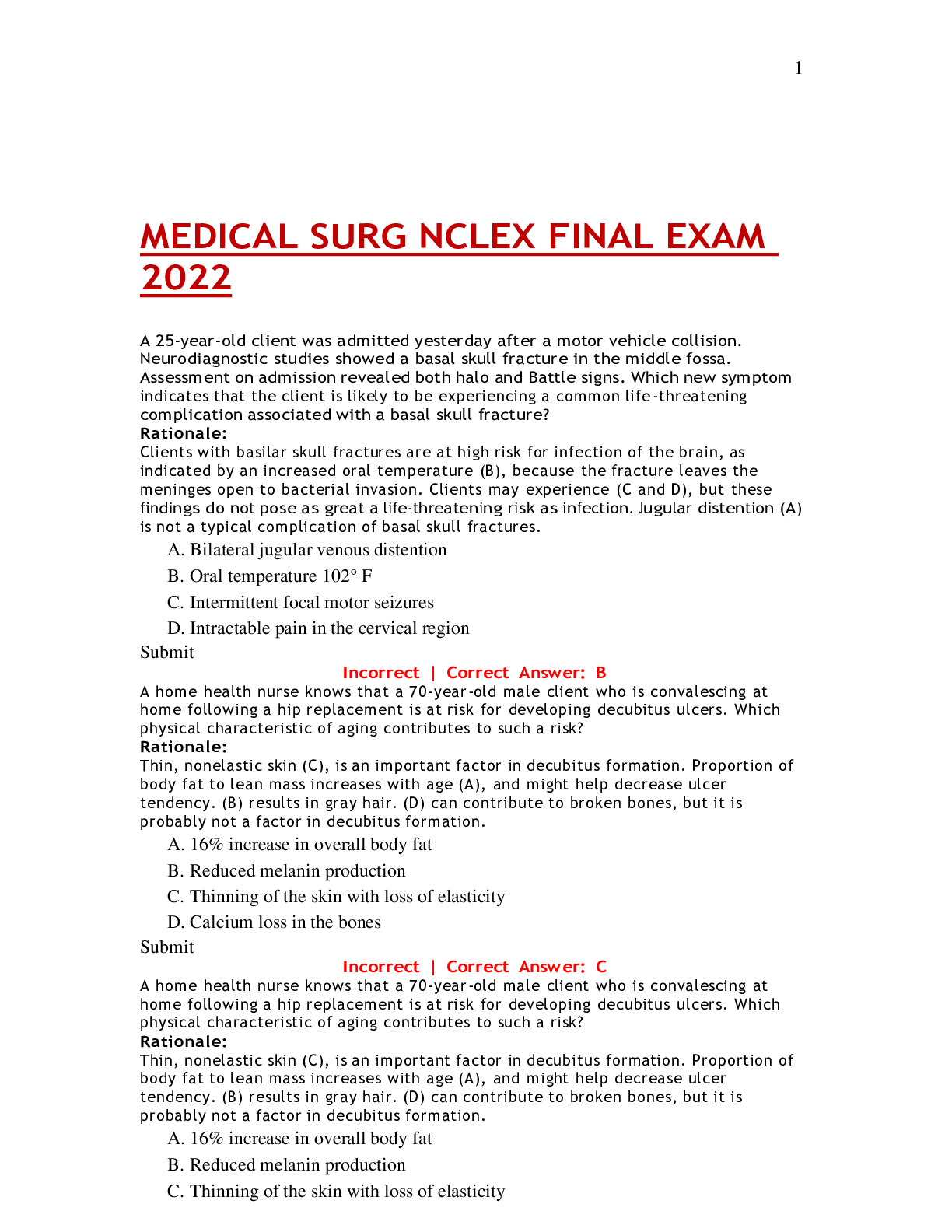
Buy this document to get the full access instantly
Instant Download Access after purchase
Buy NowInstant download
We Accept:

Reviews( 0 )
$7.00
Can't find what you want? Try our AI powered Search
Document information
Connected school, study & course
About the document
Uploaded On
Sep 06, 2022
Number of pages
41
Written in
Additional information
This document has been written for:
Uploaded
Sep 06, 2022
Downloads
0
Views
62



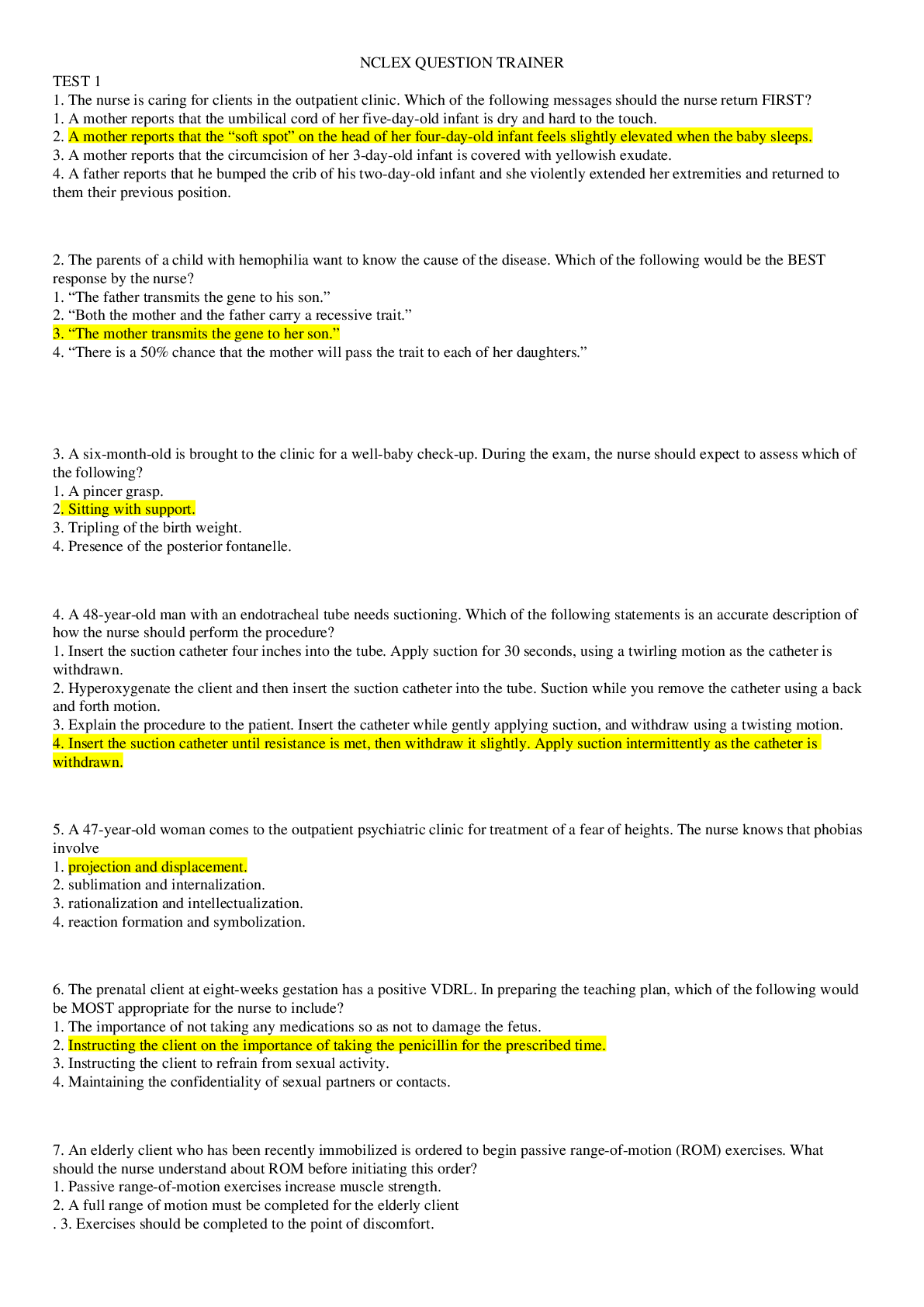
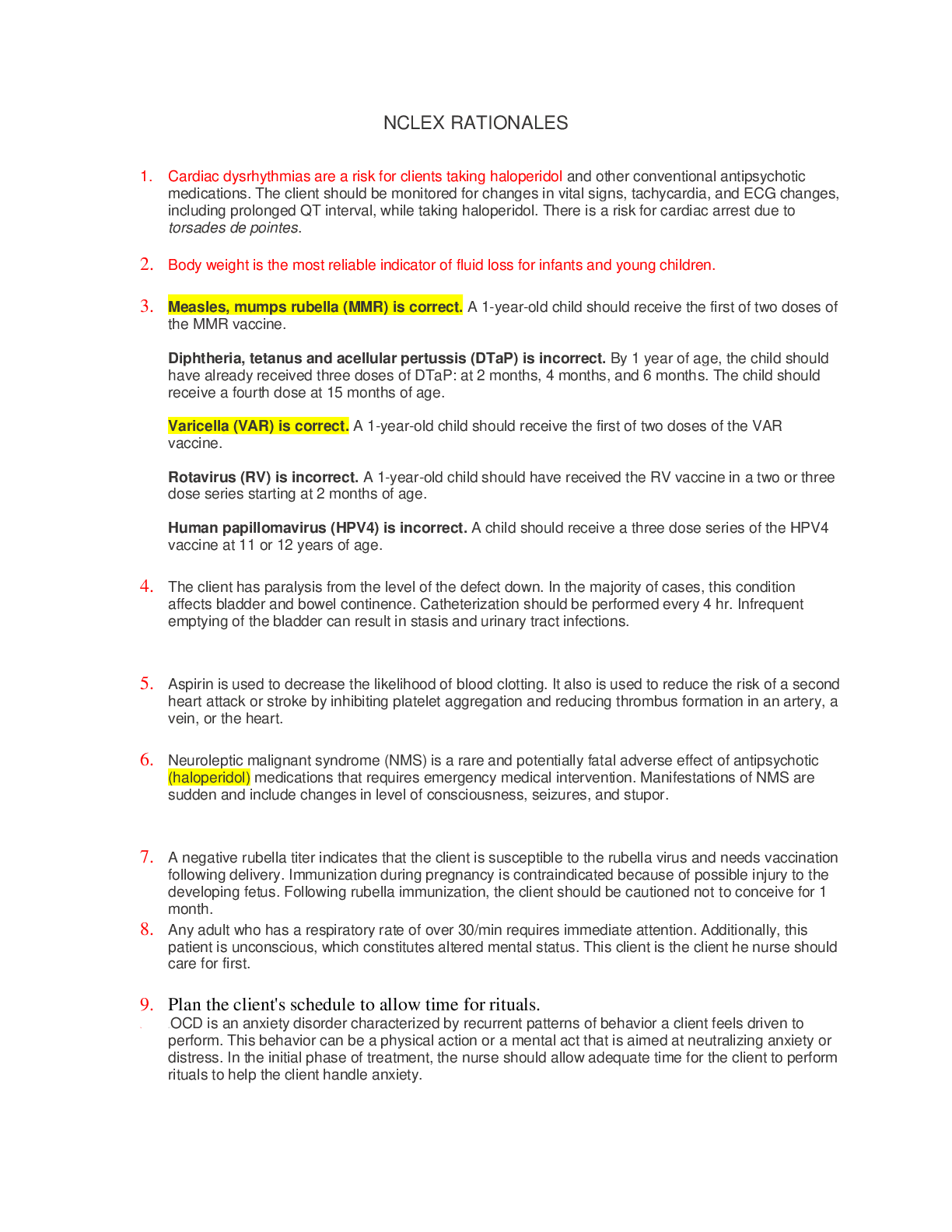
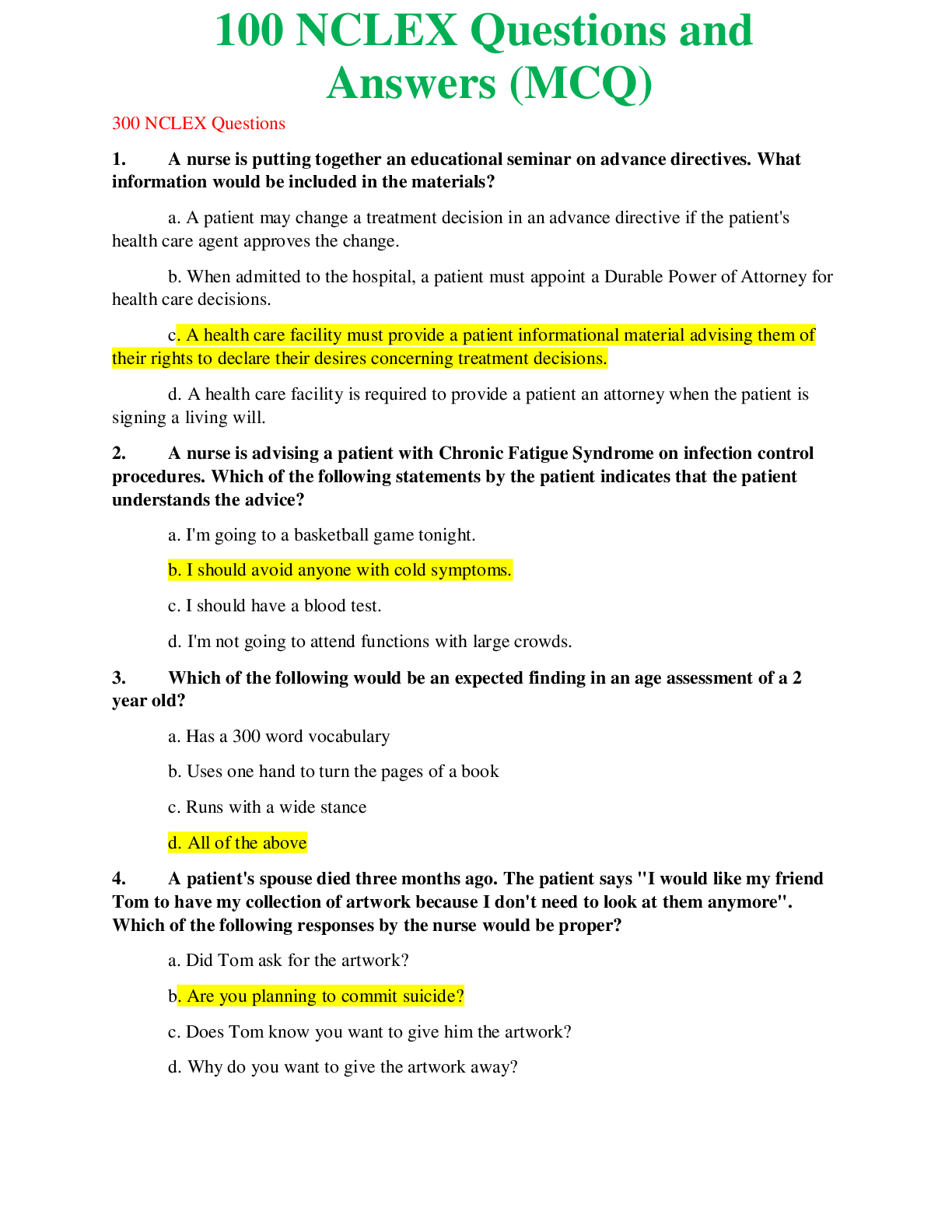
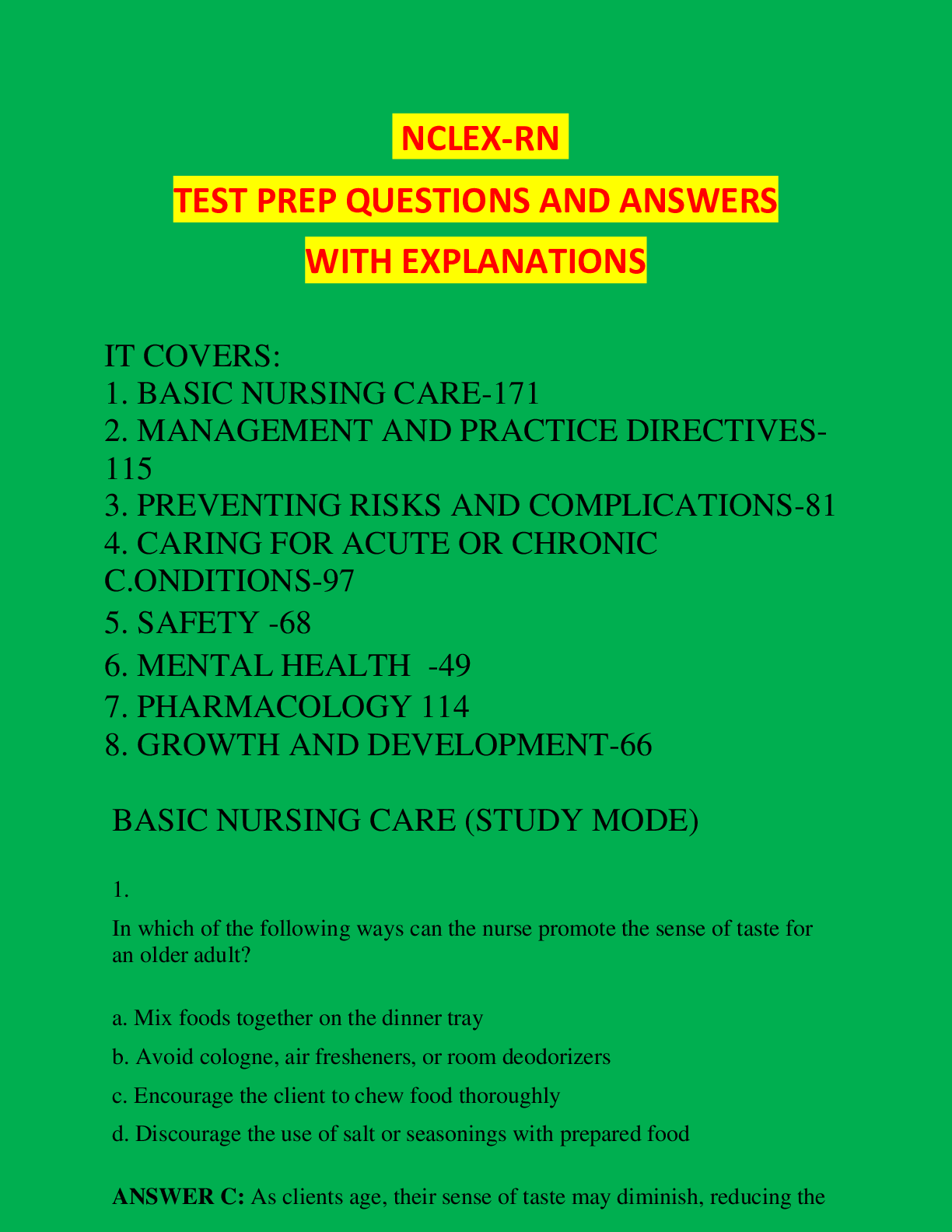

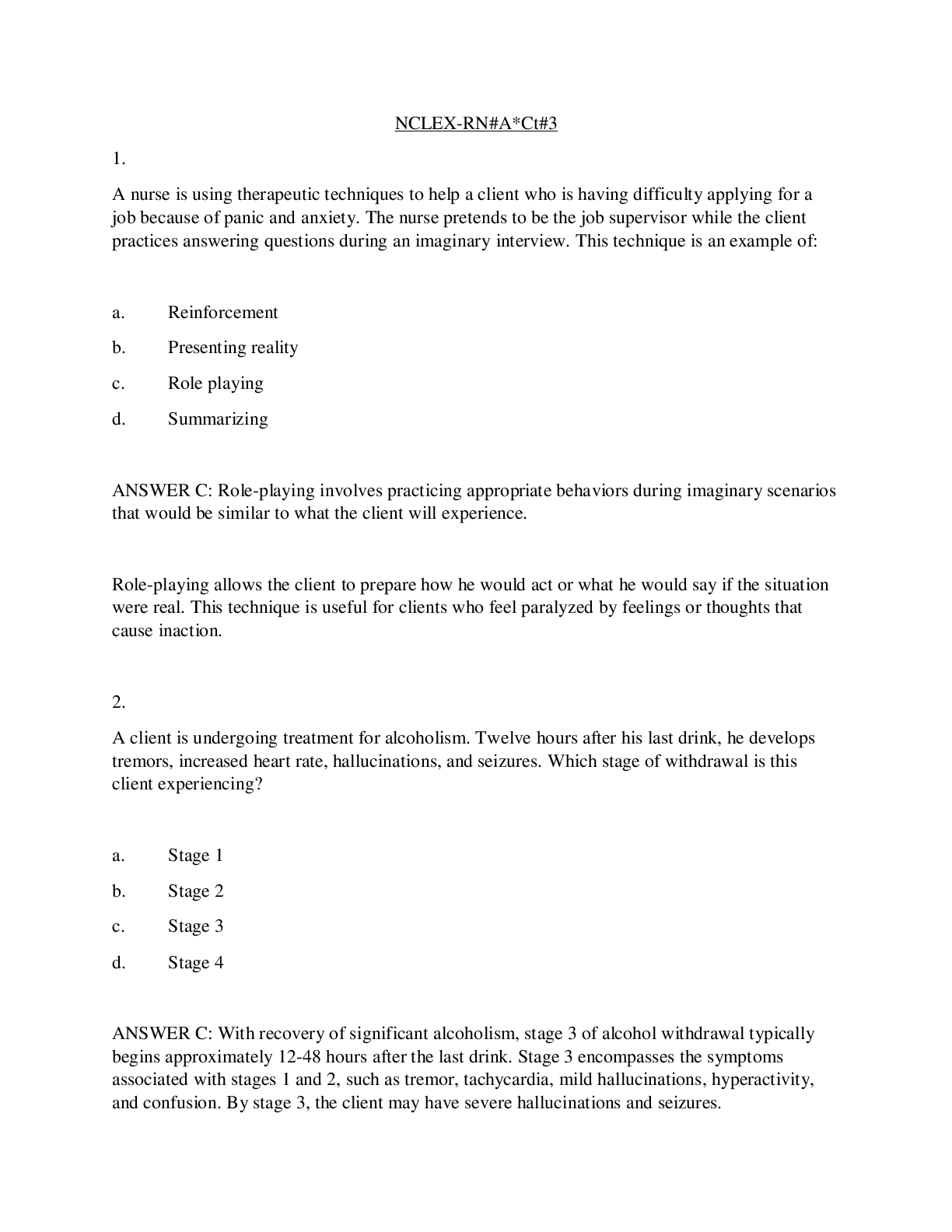
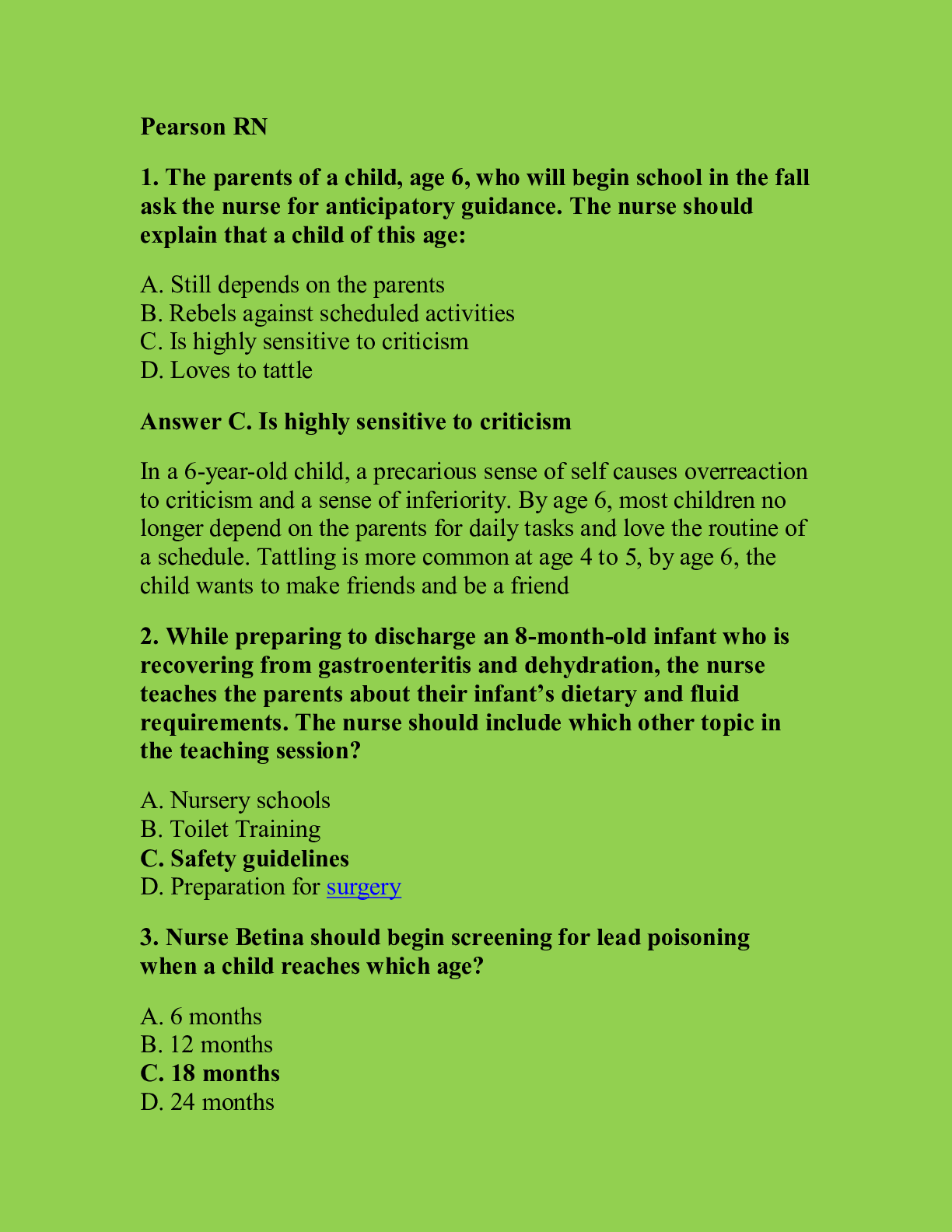


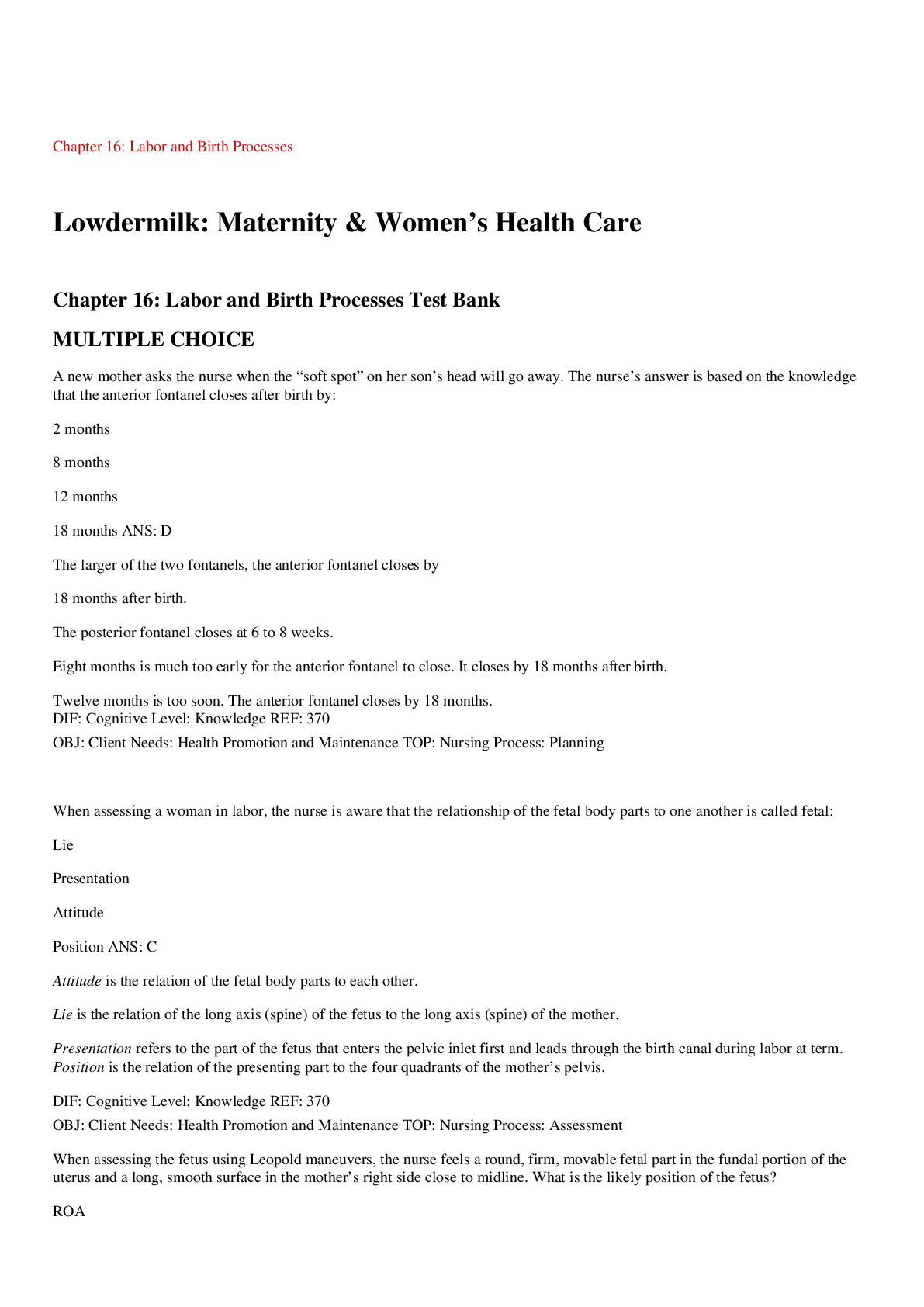
.png)

